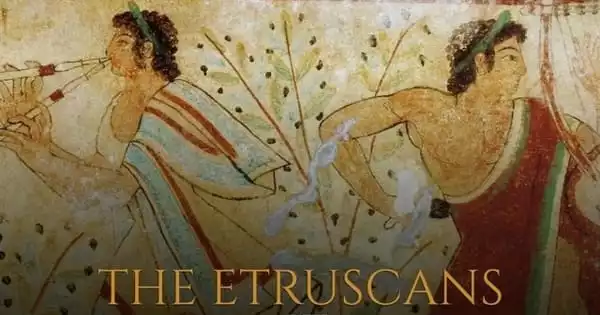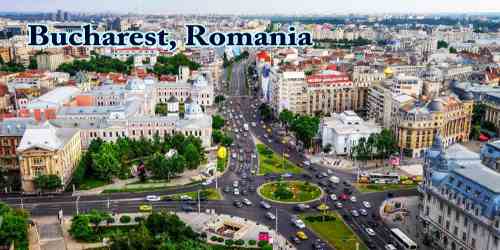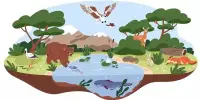The Etruscan civilization was an early civilization that occupied Italy from Tuscany to Rome (900 BCE-100 BCE). It was mostly forgotten and barely recognized until archaeological finds showed its power, complexity, and sophistication. The Etruscans developed a distinct civilization and culture.
Researchers disclose extensive ancient DNA data acquired from peoples culturally associated with the legendary Etruscans, putting an end to a long-running controversy about the origins of this highly talented and enigmatic civilization.
For millennia, academics have been fascinated by the Etruscan civilization, which flourished throughout the Iron Age in central Italy. The Etruscans stood out from their contemporary neighbors due to their amazing metallurgical talents and a now-extinct, non-Indo-European language, sparking considerable dispute from the likes of the ancient Greek historian Herodotus on their geographical origins.
A new study by a group of scholars from Germany, Italy, the United States, Denmark, and the United Kingdom uses genome-wide data from 82 ancient individuals from central and southern Italy from 800 BCE to 1000 CE to provide insight on the origin and legacy of the enigmatic Etruscans. Their findings suggest that, despite their distinct cultural expressions, the Etruscans were closely connected to their italic neighbors, and also reflect important genetic modifications associated with historical events.
This genetic shift clearly demonstrates the involvement of the Roman Empire in large-scale population displacement during a period of greater upward or downward socioeconomic and geographic mobility
Johannes Krause
An intriguing phenomenon
With an extinct language that is only partially understood, much of what was previously known about Etruscan society came from later Greek and Roman writers’ commentary. One theory concerning their origins, supported by Herodotus, claims that the Etruscans descended from migrating Anatolian or Aegean populations due to the impact of ancient Greek cultural components. Another theory, championed by Dionysius of Halicarnassus, holds that the Etruscans arose locally from the Bronze Age Villanovan culture and were hence an autochthonous population.
Although the current agreement among archaeologists supports a local origin for the Etruscans, genetic studies have been conflicting due to a scarcity of ancient DNA from the region. The present study, which used a time transect of ancient genetic information obtained from 12 archaeological sites spanning over 2000 years, answers lingering uncertainties regarding Etruscan origins by revealing no indication for a recent population shift from Anatolia. In fact, the Etruscans shared the genetic profile of surrounding Latins, with a major proportion of their genetic profiles derived from steppe-related ancestors who came in the region during the Bronze Age.

Given that steppe-related groups were most likely responsible for the spread of Indo-European languages, which are now spoken by billions of people around the world, the persistence of a non-Indo-European Etruscan language is an intriguing and still unexplained phenomenon that will necessitate further archaeological, historical, linguistic, and genetic research.
“This linguistic persistence, combined with a genetic turnover, calls into question simple assumptions that genes equal languages and suggests a more complex scenario involving the assimilation of early Italic speakers by the Etruscan speech community, possibly during a prolonged period of admixture over the second millennium BCE,” says David Caramelli, Professor at the University of Florence.
Periods of change
Despite the presence of a few people of eastern Mediterranean, northern African, and central European ancestry, the Etruscan-related gene pool remained steady for at least 800 years, encompassing the Iron Age and the Roman Republic. However, the study discovers that during the later Roman Imperial period, central Italy saw a large-scale genetic change as a result of mixing with eastern Mediterranean populations, which most likely included slaves and soldiers transported across the Roman Empire.
“This genetic shift clearly demonstrates the involvement of the Roman Empire in large-scale population displacement during a period of greater upward or downward socioeconomic and geographic mobility,” says Johannes Krause, Director of the Max Planck Institute for Evolutionary Anthropology.
Looking at the more recent Early Middle Ages, the researchers saw northern European ancestors expanding over the Italian peninsula after the Western Roman Empire fell apart. These findings imply that Germanic migrants, notably those affiliated with the newly created Longobard Kingdom, may have had a discernible impact on the genetic landscape of central Italy.
The lineage of the population in Tuscany, Lazio, and Basilicata remained substantially continuous between the Early Medieval period and today, implying that the main gene pool of today’s inhabitants from central and southern Italy was founded at least 1000 years ago.
Although more ancient DNA from across Italy is needed to back up the above findings, ancestry shifts in Tuscany and northern Lazio that are similar to those reported for the city of Rome and its surroundings suggest that historical events during the first millennium CE had a significant impact on genetic transformations across much of the Italian peninsula.
“The Roman Empire appears to have made a long-lasting contribution to the genetic profile of southern Europeans, bridging the gap on the genetic map of western Eurasia between European and eastern Mediterranean populations,” says Cosimo Posth, Professor at the University of Tübingen and Senckenberg Centre for Human Evolution and Palaeoenvironment.
















